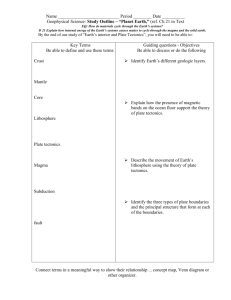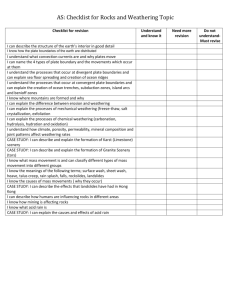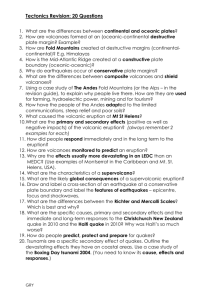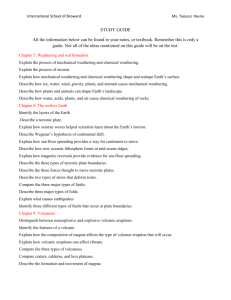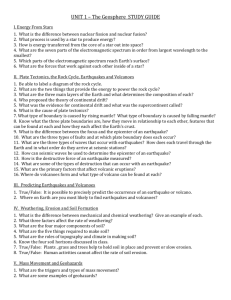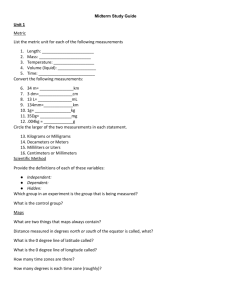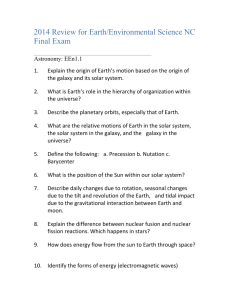here - Earth Science
advertisement
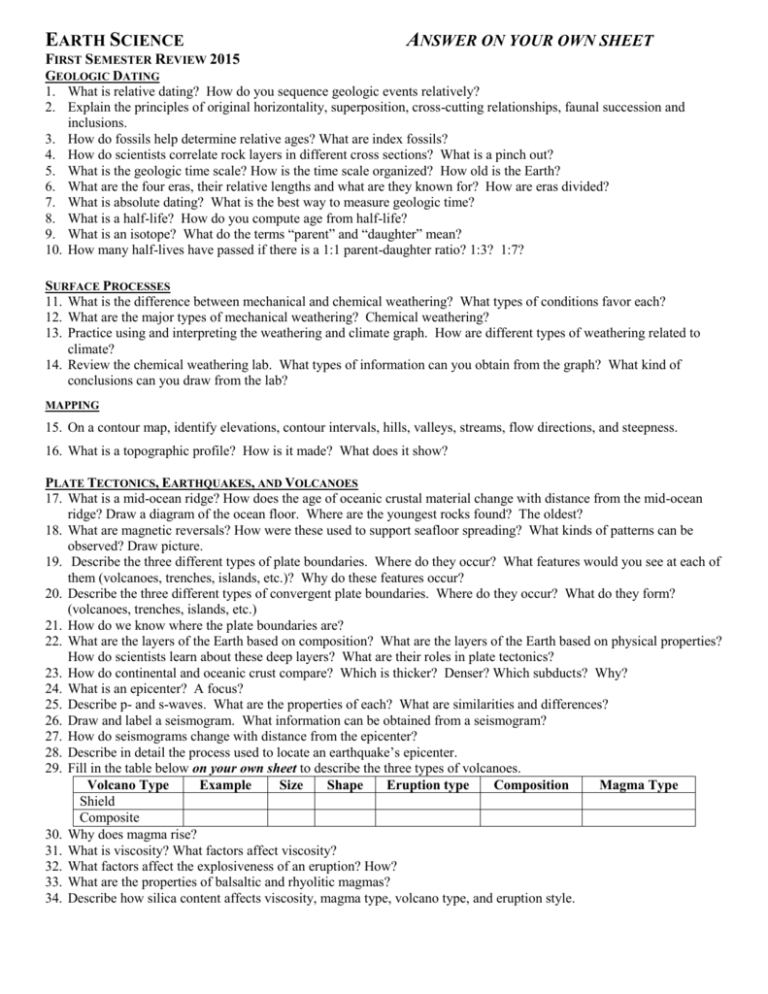
EARTH SCIENCE ANSWER ON YOUR OWN SHEET FIRST SEMESTER REVIEW 2015 GEOLOGIC DATING 1. What is relative dating? How do you sequence geologic events relatively? 2. Explain the principles of original horizontality, superposition, cross-cutting relationships, faunal succession and inclusions. 3. How do fossils help determine relative ages? What are index fossils? 4. How do scientists correlate rock layers in different cross sections? What is a pinch out? 5. What is the geologic time scale? How is the time scale organized? How old is the Earth? 6. What are the four eras, their relative lengths and what are they known for? How are eras divided? 7. What is absolute dating? What is the best way to measure geologic time? 8. What is a half-life? How do you compute age from half-life? 9. What is an isotope? What do the terms “parent” and “daughter” mean? 10. How many half-lives have passed if there is a 1:1 parent-daughter ratio? 1:3? 1:7? SURFACE PROCESSES 11. What is the difference between mechanical and chemical weathering? What types of conditions favor each? 12. What are the major types of mechanical weathering? Chemical weathering? 13. Practice using and interpreting the weathering and climate graph. How are different types of weathering related to climate? 14. Review the chemical weathering lab. What types of information can you obtain from the graph? What kind of conclusions can you draw from the lab? MAPPING 15. On a contour map, identify elevations, contour intervals, hills, valleys, streams, flow directions, and steepness. 16. What is a topographic profile? How is it made? What does it show? PLATE TECTONICS, EARTHQUAKES, AND VOLCANOES 17. What is a mid-ocean ridge? How does the age of oceanic crustal material change with distance from the mid-ocean ridge? Draw a diagram of the ocean floor. Where are the youngest rocks found? The oldest? 18. What are magnetic reversals? How were these used to support seafloor spreading? What kinds of patterns can be observed? Draw picture. 19. Describe the three different types of plate boundaries. Where do they occur? What features would you see at each of them (volcanoes, trenches, islands, etc.)? Why do these features occur? 20. Describe the three different types of convergent plate boundaries. Where do they occur? What do they form? (volcanoes, trenches, islands, etc.) 21. How do we know where the plate boundaries are? 22. What are the layers of the Earth based on composition? What are the layers of the Earth based on physical properties? How do scientists learn about these deep layers? What are their roles in plate tectonics? 23. How do continental and oceanic crust compare? Which is thicker? Denser? Which subducts? Why? 24. What is an epicenter? A focus? 25. Describe p- and s-waves. What are the properties of each? What are similarities and differences? 26. Draw and label a seismogram. What information can be obtained from a seismogram? 27. How do seismograms change with distance from the epicenter? 28. Describe in detail the process used to locate an earthquake’s epicenter. 29. Fill in the table below on your own sheet to describe the three types of volcanoes. Volcano Type Example Size Shape Eruption type Composition Magma Type Shield Composite 30. Why does magma rise? 31. What is viscosity? What factors affect viscosity? 32. What factors affect the explosiveness of an eruption? How? 33. What are the properties of balsaltic and rhyolitic magmas? 34. Describe how silica content affects viscosity, magma type, volcano type, and eruption style.
